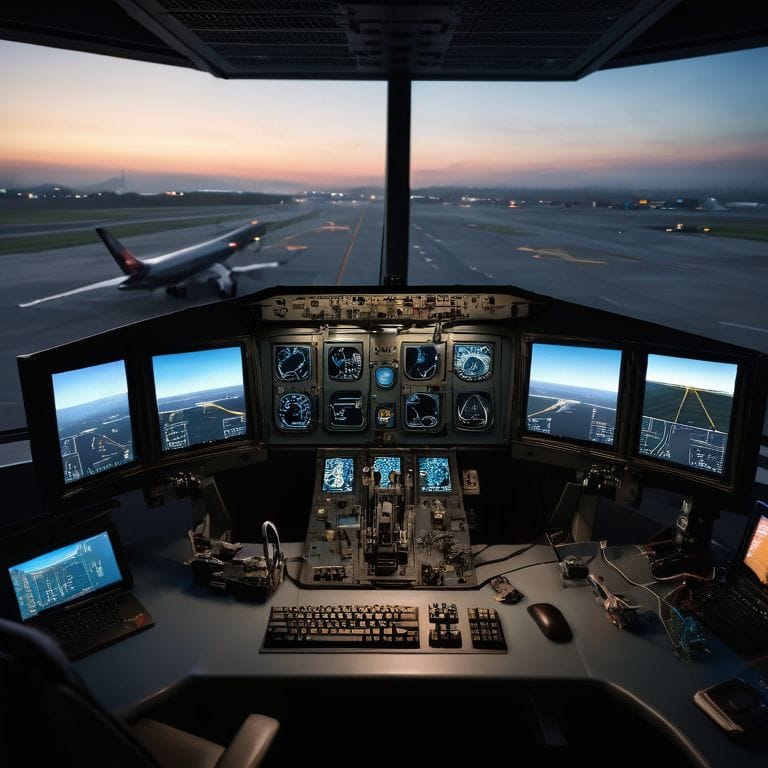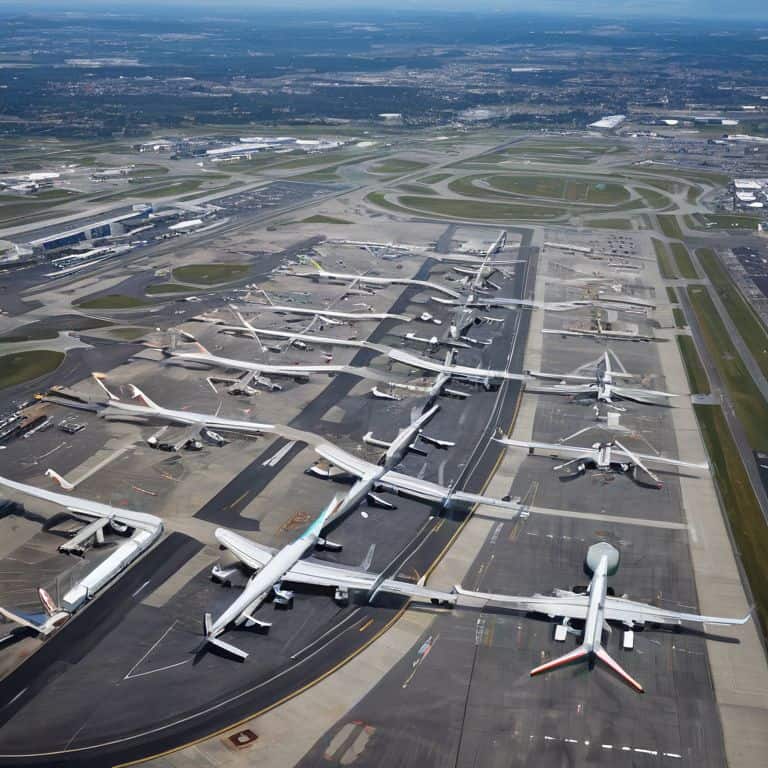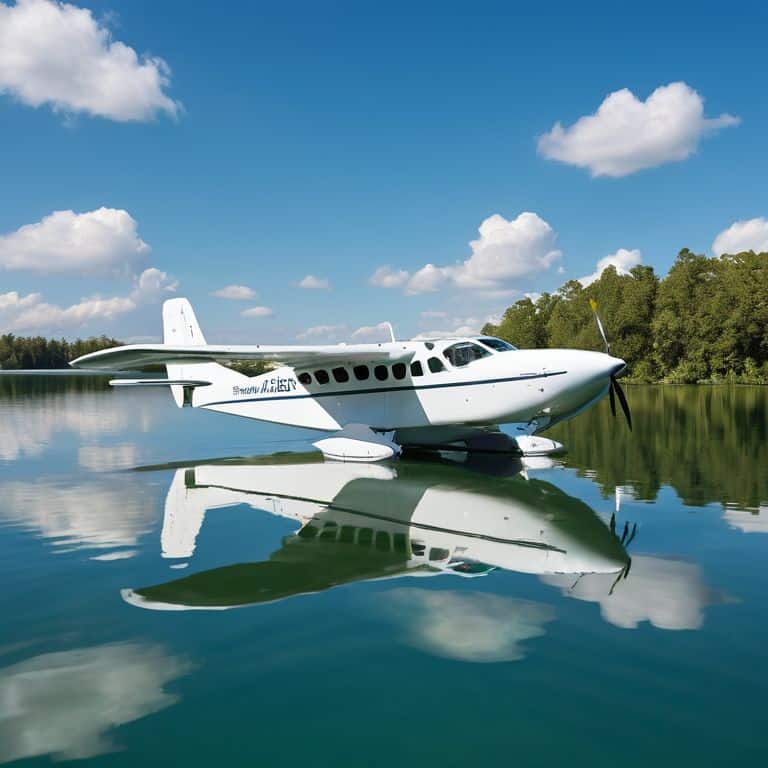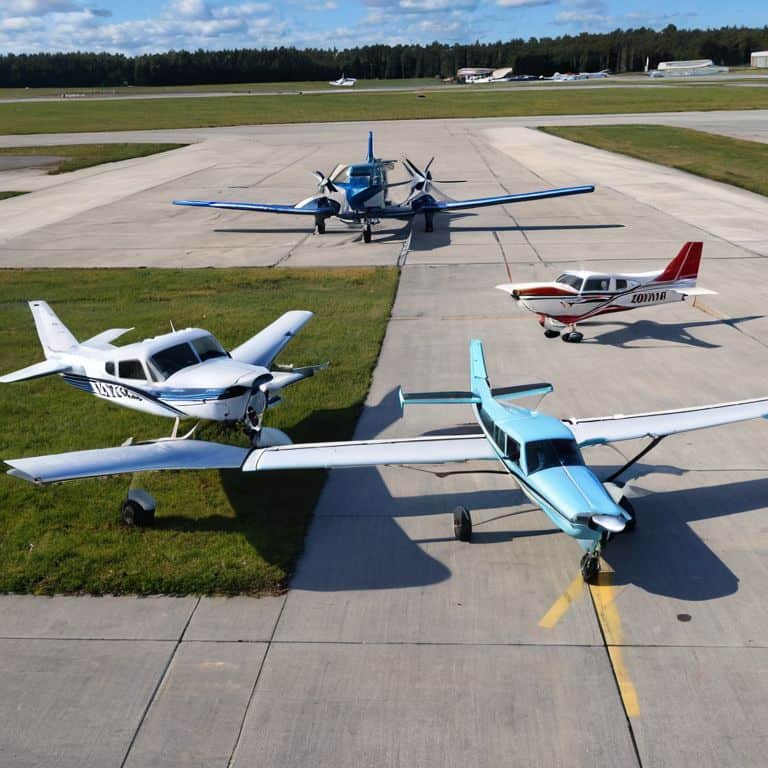I still remember my first flight simulation experience like it was yesterday – the rush of adrenaline as I took off, the sense of accomplishment when I landed safely. But before that, I had to navigate the complex world of how to get started in flight simulation. I’ve seen many aspiring pilots get discouraged by the overwhelming amount of information and technical jargon out there. The truth is, getting started with flight simulation doesn’t have to be a daunting task. In fact, with the right guidance, you can be soaring through virtual skies in no time.
In this article, I’ll share my personal experience and expertise to provide you with practical advice on how to get started with flight simulation. You’ll learn how to choose the right software, configure your settings, and start flying like a pro. I’ll cut through the hype and technical terms, focusing on the fundamentals that will get you up and running quickly. By the end of this guide, you’ll have a clear understanding of how to set up your simulation environment and start exploring the world of virtual aviation. So, buckle up and let’s take off on this journey together!
Table of Contents
- Guide Overview: What You'll Need
- Step-by-Step Instructions
- Buckle Up for Flight Simulation
- Pre-Flight Checklist: 5 Essential Tips for a Smooth Takeoff in Flight Simulation
- Key Takeaways for a Successful Flight Simulation Journey
- Taking to the Virtual Skies
- Conclusion: Taking to the Virtual Skies
- Frequently Asked Questions
Guide Overview: What You'll Need
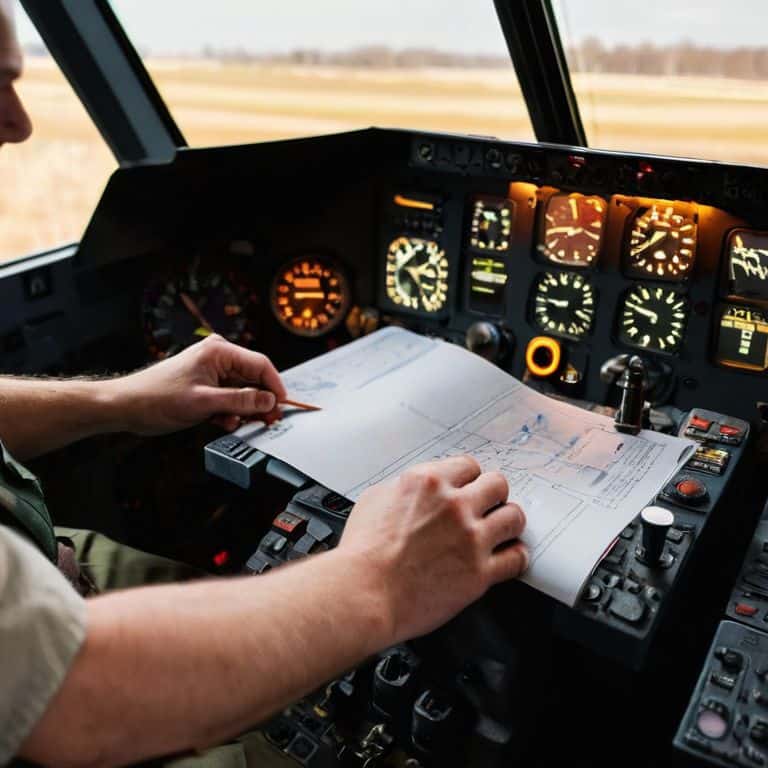
Total Time: 2 hours 30 minutes
Estimated Cost: $100 – $500
Difficulty Level: Intermediate
Tools Required
- Computer (with internet connection)
- Flight Simulator Software (e.g., Microsoft Flight Simulator or X-Plane)
- Joystick or Flight Stick (optional but recommended)
- Rudder Pedals (optional)
- Headset (for immersive experience)
Supplies & Materials
- Monitor (at least 22 inches diagonal)
- Comfortable Chair (for long flight sessions)
- Desk or Cockpit Setup (custom or pre-made)
Step-by-Step Instructions
- 1. First, let’s choose the right software for your flight simulation journey. This is a crucial step, as it will determine the quality of your experience and the level of realism you can expect. I recommend exploring popular options like Microsoft Flight Simulator, X-Plane, or Prepar3D, and reading reviews to find the one that best suits your needs and computer specifications.
- 2. Next, you’ll need to check your system requirements to ensure your computer can handle the demands of flight simulation. This includes checking your processor speed, RAM, and graphics card capabilities. Don’t worry if this sounds technical – most software providers have a simple system requirements checker on their website, and I always say, a little preparation goes a long way.
- 3. Now that you’ve selected your software and confirmed your system can handle it, it’s time to download and install the program. This process is usually straightforward, but be sure to follow the installation instructions carefully, as they may vary depending on the software you’ve chosen. Remember, patience is key when it comes to setting up your flight simulation environment.
- 4. With your software installed, let’s configure your settings for the best possible experience. This includes adjusting graphics settings, setting up your controls (whether it’s a keyboard, mouse, or flight stick), and choosing your starting aircraft and location. Don’t be afraid to experiment with different settings to find what works best for you – after all, practice makes perfect.
- 5. It’s time to choose your aircraft and get familiar with its handling and characteristics. Each plane has its unique features, and understanding these will greatly enhance your simulation experience. I recommend starting with a simpler aircraft, like a Cessna 172, and then moving on to more complex planes as you gain experience. Learning to fly is all about progression, and starting with the basics will serve you well.
- 6. Next, let’s plan your first flight. This involves selecting a departure and arrival airport, setting your weather conditions, and choosing your flight plan. Don’t worry too much about the details at this stage – the goal is to get you airborne and comfortable with the controls. As your instructor, I’ll guide you through this process, and before you know it, you’ll be soaring through the skies like a pro.
- 7. Finally, it’s time to take to the skies and put your new skills to the test. Remember to stay calm, follow your checklist, and enjoy the experience. As you fly, pay attention to your aircraft’s performance, and don’t hesitate to reach out if you have any questions or need further guidance. And always keep in mind, flying is a skill that takes time to develop, so be patient with yourself and have fun.
Buckle Up for Flight Simulation
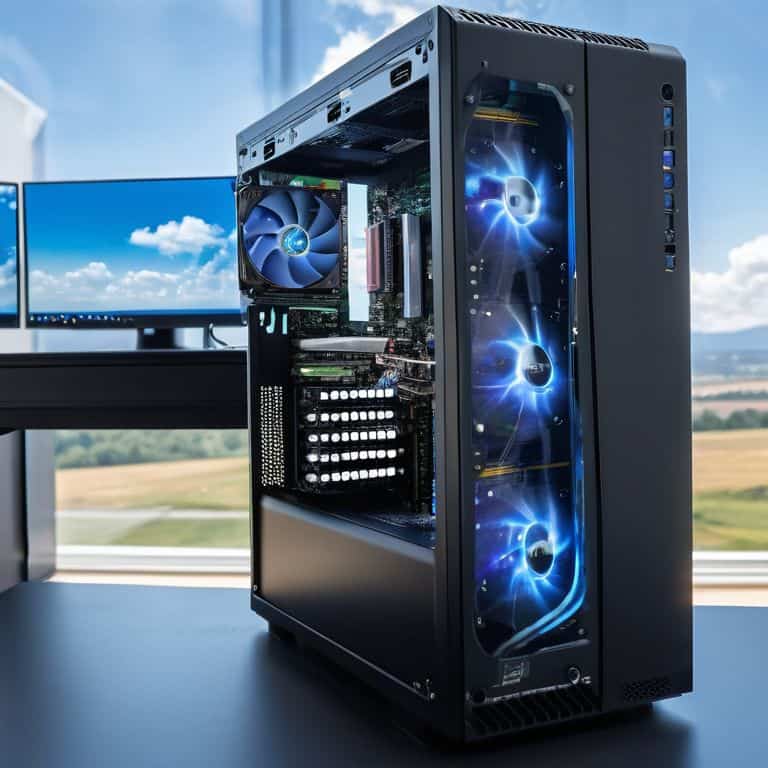
As we dive into the world of flight simulation, it’s essential to consider the flight simulator system requirements that will ensure a smooth and realistic experience. This includes not only the computer’s processing power but also the graphics card and memory. Choosing the right hardware is crucial, and I always recommend checking the system requirements for the specific software you plan to use. For example, some of the best flight simulation software for PC requires a high-end graphics card to render realistic landscapes and weather conditions.
When it comes to setting up your simulation experience, beginner-friendly flight simulation games can be a great starting point. These games often come with pre-configured settings and tutorials that can help you get familiar with the controls and basics of flight simulation. Additionally, consider setting up a home flight simulator cockpit to enhance your experience. This can be as simple as investing in a good joystick or as complex as building a custom cockpit with realistic controls.
To take your simulation experience to the next level, focus on realistic flight simulation experiences. This can be achieved by using realistic weather conditions, air traffic control simulations, and even realistic aircraft systems. By combining these elements, you’ll be able to immerse yourself in a truly realistic flight simulation environment. Remember, the key to a great simulation experience is attention to detail, so don’t be afraid to experiment and try out new things – it’s all part of the learning process.
Setting Up Your Home Cockpit Controls
To truly immerse yourself in flight simulation, setting up your home cockpit controls is essential. Think of it like preparing for takeoff – you need to make sure all your instruments are in working order. This means investing in a good joystick, throttle, and rudder pedals. Don’t worry if it seems overwhelming; start with the basics and build your way up.
As you set up your controls, consider the layout of a real cockpit. You want your instruments to be within easy reach, just like in a real plane. This will help you get into the mindset of a pilot and make the simulation feel more realistic. Remember, the goal is to create an environment that feels like you’re really flying. With the right controls and a little practice, you’ll be soaring through virtual skies in no time.
Unlocking Best Flight Simulator Software
Now that we’ve got our pre-flight checks done, let’s talk software. When it comes to flight simulation, the right program can make all the difference. I always tell my students to think of software like an aircraft’s engine – it’s the heart of the operation. For beginners, I recommend starting with popular options like Microsoft Flight Simulator or X-Plane. These programs offer realistic graphics and flight models that will make you feel like you’re really soaring through the skies. They’re also relatively user-friendly, which is important when you’re just starting out.
Pre-Flight Checklist: 5 Essential Tips for a Smooth Takeoff in Flight Simulation
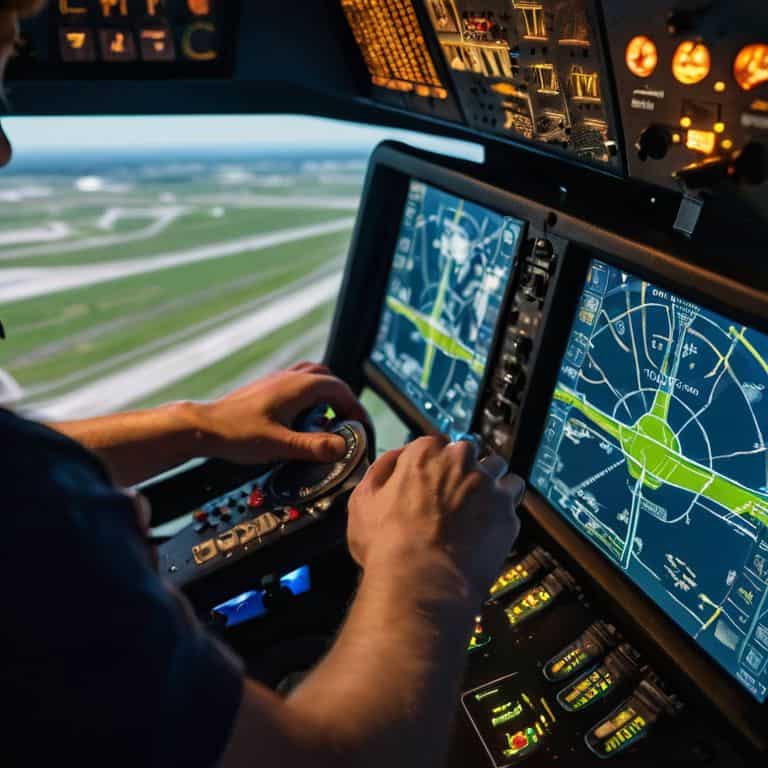
- Choose the Right Aircraft: Select a plane that fits your skill level and interests, just as you would in real-life flight training
- Master Your Controls: Invest time in setting up and familiarizing yourself with your home cockpit controls for a more immersive experience
- Plan Your Route: Decide on a flight plan, including departure and arrival airports, to simulate real-world flying scenarios
- Understand the Weather: Learn how to read and adjust to different weather conditions in your simulator, a crucial skill for any pilot
- Practice, Practice, Practice: Regularly fly different scenarios and missions to improve your skills and confidence in the virtual skies
Key Takeaways for a Successful Flight Simulation Journey
Choose the right flight simulator software for your needs by considering factors such as realism, system requirements, and available aircraft and scenery
Set up your home cockpit controls to mimic real-world flying experiences, including configuring flight sticks, throttles, and rudder pedals for an immersive simulation environment
Start with basic flight simulation scenarios and gradually progress to more complex missions and weather conditions to hone your skills and build confidence in a virtual flying setting
Taking to the Virtual Skies
The key to getting started in flight simulation isn’t about mastering complex software, but about understanding the fundamentals of flight and having the courage to take the first step – just as a pilot does on their first real flight.
Daniel Sato
Conclusion: Taking to the Virtual Skies
As we conclude our journey into the world of flight simulation, let’s recap the essentials: we’ve covered the importance of choosing the right software, setting up your home cockpit controls, and understanding the basics of flight simulation. These steps are crucial for a seamless and enjoyable experience. By following the guide, you’ve taken the first steps towards becoming a proficient virtual pilot. Remember, the key to mastering flight simulation is practice and patience, so don’t be discouraged if you encounter setbacks along the way.
Now that you’re ready to take off into the virtual skies, keep in mind that flight simulation is not just about the destination, but about the journey itself. It’s an opportunity to learn, to explore, and to challenge yourself in a safe and controlled environment. As you continue to grow and improve as a virtual pilot, always remember to stay curious and keep pushing the boundaries of what’s possible. With dedication and passion, the virtual skies are yours to conquer, and I’m excited to see where your journey takes you.
Frequently Asked Questions
What are the minimum computer specifications required to run flight simulator software smoothly?
To run flight simulator software smoothly, you’ll need a computer with a multi-core processor, at least 8GB of RAM, and a dedicated graphics card with 2GB of video memory. Think of it like pre-flight checks – ensuring your system meets these specs will help you avoid turbulence and enjoy a seamless flying experience.
How do I choose the right flight simulator software for my skill level and interests?
Choosing the right flight simulator software depends on your goals and experience. For beginners, I recommend starting with user-friendly options like Microsoft Flight Simulator or X-Plane. If you’re looking for more realism, consider Prepar3D or FlightGear. Let’s discuss your interests and skill level to find the perfect fit.
What are the essential components I need to set up a basic home cockpit for an immersive flight simulation experience?
To set up a basic home cockpit, you’ll need a few essential components: a flight stick or yoke, rudder pedals, and a throttle quadrant. These will give you a solid foundation for an immersive experience. Think of it like preparing for takeoff – you need the right instruments to navigate safely and enjoy the ride.
